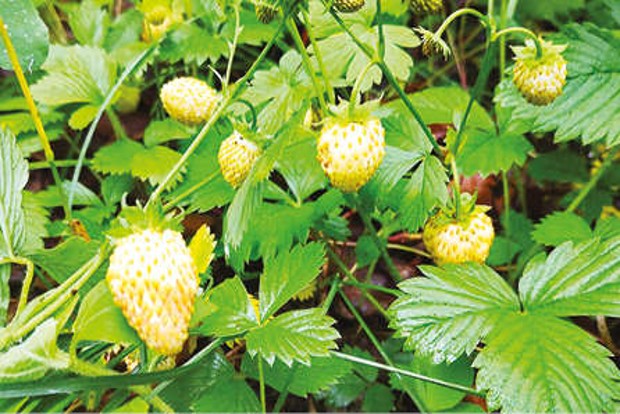Begin typing your search...
Backyard Inquiry: Why strawberries turn a ghostly shade of white
Strawberries are not always red. Fragaria nubicola, native to the Himalayas, can produce a vivid red fruit or a ghostly white one; another species, F. vesca, can produce a white fruit with brilliant scarlet seeds, as well as a conventional red type. What gives some strawberries such a ghostly pallor?

Chennai
One answer has been uncovered by scientists curious about the humble strawberry’s genetic material. There are numerous species of the fruit, and some sport five times as many chromosomes as others. Strawberry scientists think this means that as the plants evolved, they acquired extra genes that could provide a playground for unusual new traits.
While the core genes kept the day-to-day affairs of the plant running, the extras could be tweaked to yield a new shade of pink, a new hardiness to drought or particularly prickly leaves — whatever the strawberry’s unique environment demanded. In a paper, biologists reported that they have sequenced the genomes of a handful of strawberry species and identified a set of genes that are common across all of them, representing the core genome of the strawberry. Along the way, the researchers identified a set of mutations that turned strawberries white, while keeping the taste and aroma the same. The findings open the door to understanding how strawberries manage their bulky genetic inheritance, as well as suggesting the possibility of more targeted breeding.
Strawberries grow wild in places as varied as Alaska and Southern California beaches, said Patrick Edger, a professor of horticulture at Michigan State University and an author of the new paper. But they likely originated in Asia. For this study, the scientists collected samples from 128 wild strawberry plants in China and sequenced their genes, looking for commonalities across species. As they pored over the data, they made a surprising discovery. “It was very clear there was another species” that no one had detected before, Dr. Edger said.
Alongside a number of strawberries already known to science, a new species was found among the samples collected in the wild. The genetic analysis showed it was different from the others, and the plant looked different, too, with thicker leaves that had a light green underside, among other changes. (The new species was named Fragaria emeiensis.) The scientists found that as many as 45 percent of a strawberry’s genes were shared among the 10 species examined in the paper. That implies that the remainder — more than half of a strawberry’s genetic material — is used to adapt a species to its particular location and situation. Breeders could bring these genes to existing commercial species in the future, helping strawberry farmers address problems like drought. “It’s something that myself and collaborators in the larger strawberry community are going to start diving into this data set to understand,” Dr. Edger said.
The research also pieced together the genetic puzzle of what makes some strawberry species turn white. The team found that lighter fruits were linked to mutations in a gene called MYB10, which controls the production of pigments called anthocyanins. Lower levels of anthocyanins would be expected to result in a paler color. As scientists understand more about what makes the fruits the way they are, Dr. Edger expects strawberry breeding to become more precise, and not just on matters of practical importance to farmers.
These days, thanks to the efforts of plant breeders, it’s not hard to find apples bursting with flavour, and in a wide variety of colors and shapes, too. “I imagine,” Dr. Edger said, “strawberry is going to be the same way in 10 to 20 years.”
Greenwood is a journalist with NYT©2021
The New York Times
Visit news.dtnext.in to explore our interactive epaper!
Download the DT Next app for more exciting features!
Click here for iOS
Click here for Android
Next Story



